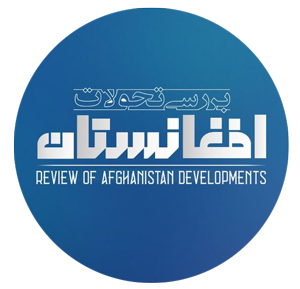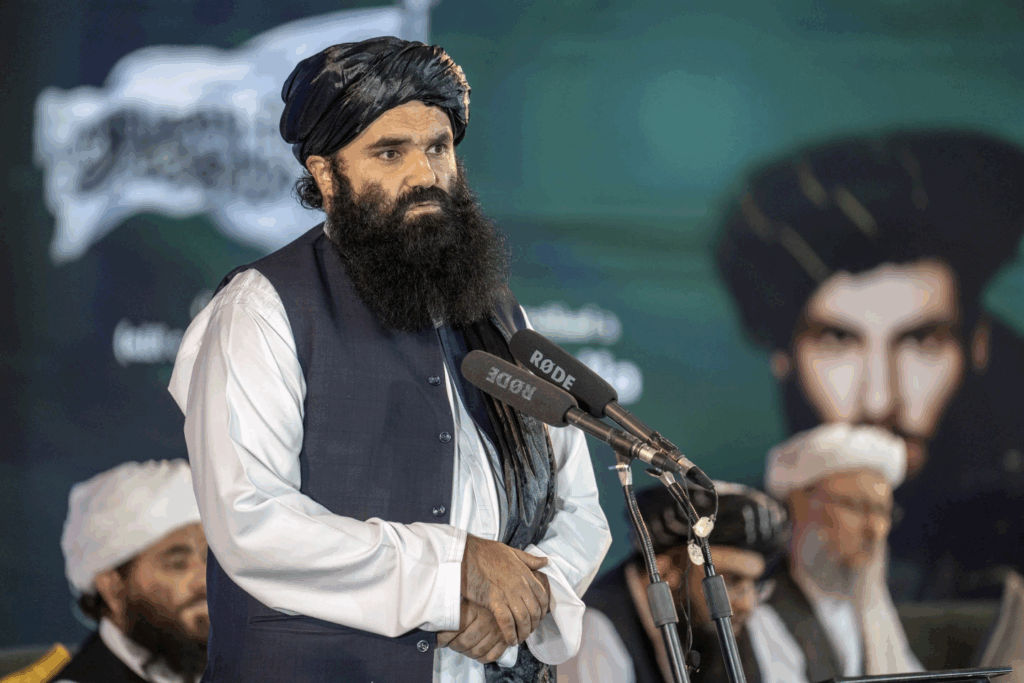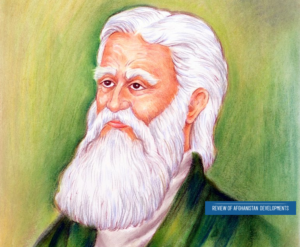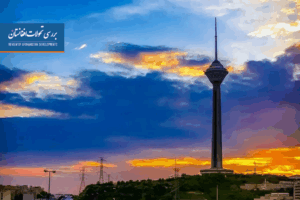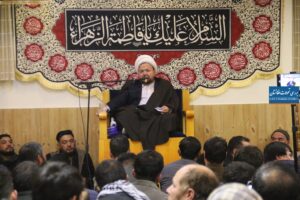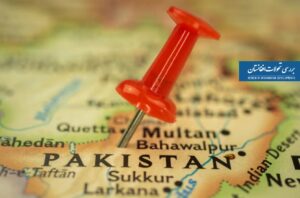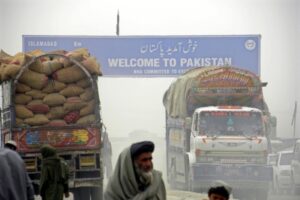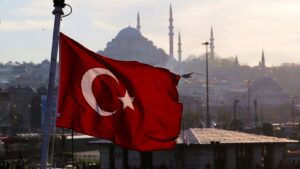Review of Afghanistan developments
As reported by the media, Sirajuddin Haqqani, the Interior Minister of the Taliban government, delivered a rare address during the closing ceremony of the “Reform and Capacity Building Seminar”. In his speech, he commended the leadership accomplishments of Taliban leader Mullah Hebatullah Akhundzada, stating: “The standing of the Islamic system surpasses the interests, desires, and personal standings of the members of the Islamic Emirate.”
He stated that Mullah Hebatullah Akhundzada is exerting himself beyond his human limits to govern Afghanistan and is laboring diligently both day and night to fortify the Islamic system, execute reforms, broaden services, and uphold fundamental laws.
Sirajuddin Haqqani has expressed that the remarks made by Mullah Hebatullah Akhundzada serve as a source of learning and direction for him. In a segment of his address, the interior minister of the Taliban government acknowledged that there are occasions when he misinterprets responsibility and judgment; however, upon meeting with these elders and engaging with them, he gains a clearer understanding of the genuine significance and weight of responsibility.
This type of commendation for the Taliban leader originates from an individual who, in recent months, has been extensively covered by anti-Taliban media regarding a significant divide between Sirajuddin Haqqani and Mullah Hebatullah Akhundzada, the spiritual leader of the Taliban. The story of a substantial rift between these two key figures in the Taliban administration has gained such traction that the potential for a coup led by Sirajuddin Haqqani has even been suggested.
For several months, media outlets and individuals opposed to the Taliban government have concentrated on the conflict between the Haqqani and Kandahar factions. From this narrative, numerous rumors were created and circulated, including claims regarding the assassination of Mullah Baradar in Kandahar, the imposition of martial law in Kabul, and the alleged involvement of the Taliban leader in the assassination of Khalilur Rahman Haqqani.
The nature of the dispute between Haqqani and the Taliban leader
In light of media reports highlighting significant divisions among Taliban leaders and the potential for conflict between the Eastern and Kandahar factions, alongside Sirajuddin Haqqani’s recent remarks commending the leadership accomplishments of Mullah Hebatullah Akhundzada and affirming his loyalty to him, one must question whether the disparity between Sirajuddin Haqqani and the Taliban leader is merely a psychological tactic employed by opposing media, or if there are indeed substantial differences between these two groups. This article delves into this matter.
Differences in opinion and unity in maintaining the system
Documents and reports suggest that there are conflicts between Sirajuddin Haqqani and the faction of Mullah Hebatullah located in Kandahar regarding certain governance matters, and this situation cannot be concealed. The official media of the Taliban government, along with their formal statements, also corroborate the existence of a degree of discord between these two factions.
An analysis of Sirajuddin Haqqani’s remarks regarding the prohibition of girls’ education, the restriction on media photography, and foreign policy, in comparison to the policies established and executed by Mullah Haibatullah Akhundzada, reveals a divergence of views between the two. This disagreement extends beyond Sirajuddin Haqqani, as several other Taliban leaders also express dissent regarding certain governmental policies. The primary critical faction is predominantly located in Kabul and consists of those responsible for the execution of both domestic and foreign policy.
An analysis of the changes during the four years of Taliban governance indicates that the stance of Sirajuddin Haqqani and other Kabul-based officials who critique the existing situation has remained limited to voicing dissenting views. This stands in stark contrast to the media’s psychological operations, which highlighted the extent of the divisions to the point of suggesting a potential internal coup by the Haqqani faction against the Taliban leadership.
The inquiry emerges regarding which priority has hindered the critical spectrum, including Sirajuddin Haqqani, from challenging the Taliban leadership? Overall, maintaining the system and the principle of Taliban governance in Afghanistan stands as the singular priority and utmost interest for the Taliban leaders, which has thus far served as a barrier against dissenting views and factional interests within the framework of the Taliban system.
A study of the Taliban’s actions and spoken beliefs indicates that they prioritize the preservation and survival of their system above all else, considering it paramount over any secondary concerns. Thus, in line with the Taliban’s ideological framework, when faced with a choice between maintaining the system and upholding subsidiary or compromised values, the survival of the system is deemed more important. This was explicitly stated in Sirajuddin Haqqani’s recent comments, where he asserted, “The position of the Islamic system is higher than the interests, desires, and personal positions of the members of the Islamic Emirate.”
Furthermore, common political interests also strengthen and uphold factional relationships within the Taliban. The internal divisions of the Mujahideen government during the 1970s, along with its subsequent defeat by the Taliban, are expected to act as a precedent for the agents of the Taliban regime, discouraging them from inciting discord.
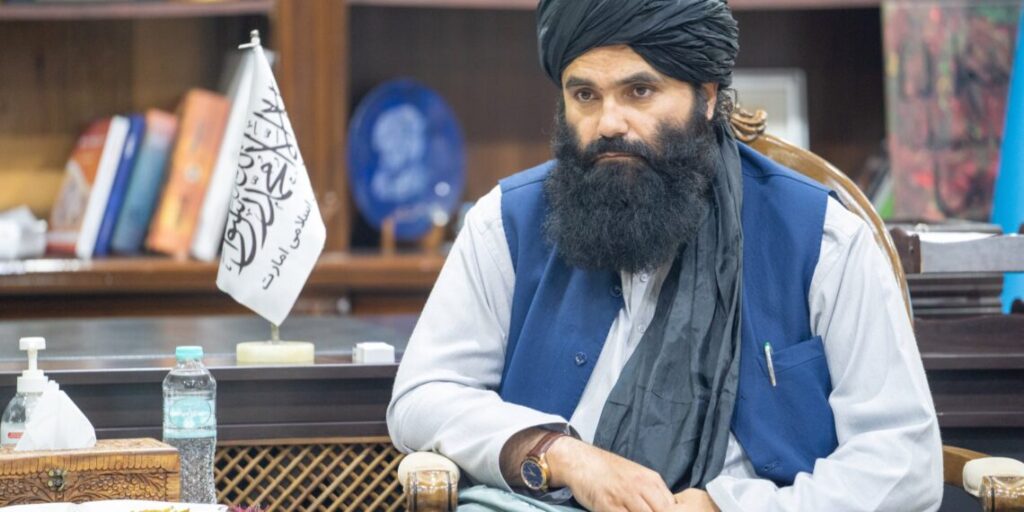
Narrative-making and media warfare of Taliban opponents
The manner in which media outlets that oppose the Taliban have analyzed and emphasized the distinctions between the Haqqani and Kandahar factions indicates that the narrative surrounding these differences is being actively promoted as a policy. In recent years, opponents of the Taliban, both on an individual basis and through various media channels, have persistently sought to impose their own narrative on the Afghan populace and beyond, focusing on the significant disparities among the Taliban leaders and the potential for the Taliban government to disintegrate from within.
The death of Mullah Haibatullah Akhundzada, the Taliban’s reliance on Pakistan, the link between the Taliban and ISIS Khorasan, the significant disagreements among Taliban leaders, the Taliban government’s facilitation and training of extremist factions in the region, and the international isolation faced by the Taliban government were six narratives fabricated and disseminated by opponents and media against the Taliban government since 1401. Over time, these narratives have been shown to be false. The unfolding events and the actions of the Taliban government have demonstrated the inaccuracy of these narratives, leading to the removal of some of these psychological operation themes from the opposition’s agenda.
- It is important to highlight that the media policy of the Taliban government, along with the limitations imposed on independent media operations in Afghanistan, has obstructed the dissemination of accurate information within the country. This situation has facilitated psychological warfare and media campaigns by opposing factions. As long as domestic media face restrictions, even if only temporarily, psychological warfare and deceptive media narratives will sway public opinion, including that of the elite.
Deviation in the level of expert analysis
An examination of the developments in Afghanistan over the past four years, along with a rebuttal of certain narratives propagated by the adversaries of the Taliban government, indicates that some analysts have been swayed by the media’s psychological operations in their comprehension and evaluation of the situation in Afghanistan, particularly regarding the Taliban’s governance and character. To accurately grasp the essence of the Taliban leadership and its administration, one must adopt an unfiltered perspective of Afghanistan and the Taliban government, rather than viewing these matters through a prejudiced lens. Failing to do so will result in flawed analyses and misunderstandings of the events unfolding in Afghanistan.
An examination of the remarks made by various experts regarding the relationships among Taliban leaders distinctly indicates that their cognitive framework has been molded by the impact of media psychological operations. Consequently, within this framework, they have acknowledged the disparities between the Haqqani faction and the faction led by the Taliban leader, which extends beyond the realm of reality.
More Articles:
Nature and Impact of Disagreements among Taliban Leaders
Scenarios for the Future of the Taliban government
Conclusion
The distinctions among Taliban leaders, such as Sirajuddin Haqqani and Mullah Hebatullah Akhundzada, the Taliban’s leader, are undeniable, and even certain senior officials within the government openly recognize these distinctions. The notion that these differences are significant enough to result in a coup or physical ousting stems from the impact of psychological operations conducted by adversaries of the Taliban. It is essential to comprehend that preserving the system remains the foremost priority for all Taliban leaders.
The portrayal of the anti-Taliban media along conflicting lines, particularly the contention between Sirajuddin Haqqani and the Taliban leader, has shaped a perception of the Taliban government that diverges significantly from the truth. It is essential to acknowledge the Taliban government for its true nature, which cannot be achieved without comprehending and liberating oneself from the psychological operations employed by the media.
